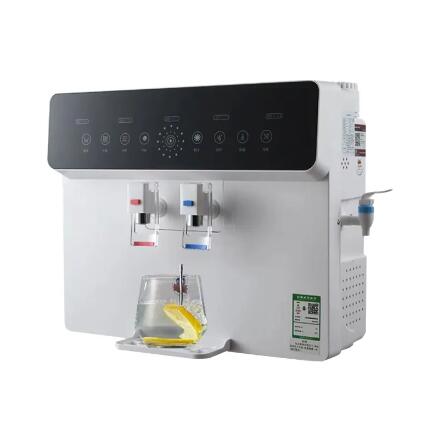Understanding Reverse Osmosis Water Drinking Systems: How They Work and Their Benefits
2024-07-19
Introduction
Water is essential for life, and having access to clean, safe drinking water is crucial for maintaining good health. One of the most effective methods for ensuring water purity is through a Reverse Osmosis (RO) water drinking system. In this blog, we'll explore how RO systems work, their components, and the numerous benefits they offer.
How Reverse Osmosis Works
Reverse osmosis is a water purification process that removes contaminants from water by using pressure to force water molecules through a semipermeable membrane. Here’s a step-by-step breakdown of the process:
1. Pre-Filtration: Water first passes through a pre-filter to remove larger particles such as sediment, dirt, and chlorine, which can damage the RO membrane.
2. Reverse Osmosis Membrane: The pre-filtered water is then pushed through the RO membrane, a key component that only allows water molecules to pass through while blocking contaminants like heavy metals, salts, and other impurities.
3. Post-Filtration: The filtered water goes through a post-filter to further enhance its taste and quality by removing any remaining impurities or odors.
4. Storage and Dispensing: The purified water is stored in a tank and can be dispensed through a dedicated faucet when needed.
Key Components of an RO System
1. Sediment Filter: Captures particles like dirt and rust.
2. Carbon Filter: Removes chlorine and other chemicals that affect taste and odor.
3. RO Membrane: The heart of the system, filtering out most contaminants.
4. Post-Filter: Polishes the water for final purity.
5. Storage Tank: Holds the purified water until it’s needed.
6. Faucet: A dedicated tap for dispensing the purified water.
Benefits of Reverse Osmosis Systems
1. Removes Contaminants: RO systems effectively remove a wide range of contaminants, including lead, arsenic, nitrates, and pesticides, providing safe drinking water.
2. Improves Taste and Odor: By removing chlorine and other chemicals, RO systems enhance the taste and odor of your drinking water.
3. Cost-Effective: While there is an initial investment, using an RO system can save money in the long run by reducing the need for bottled water.
4. Convenience: Having a steady supply of purified water at home means you always have access to clean drinking water without the need to purchase and transport bottled water.
5. Environmentally Friendly: Reducing reliance on bottled water helps decrease plastic waste and lowers your carbon footprint.
Conclusion
A reverse osmosis water drinking system is an efficient and effective way to ensure the water you consume is clean, safe, and great-tasting. By understanding how these systems work and the benefits they offer, you can make an informed decision about investing in one for your home. With the peace of mind that comes from knowing your water is free from harmful contaminants, you can enjoy the many health benefits that come from staying properly hydrated.



